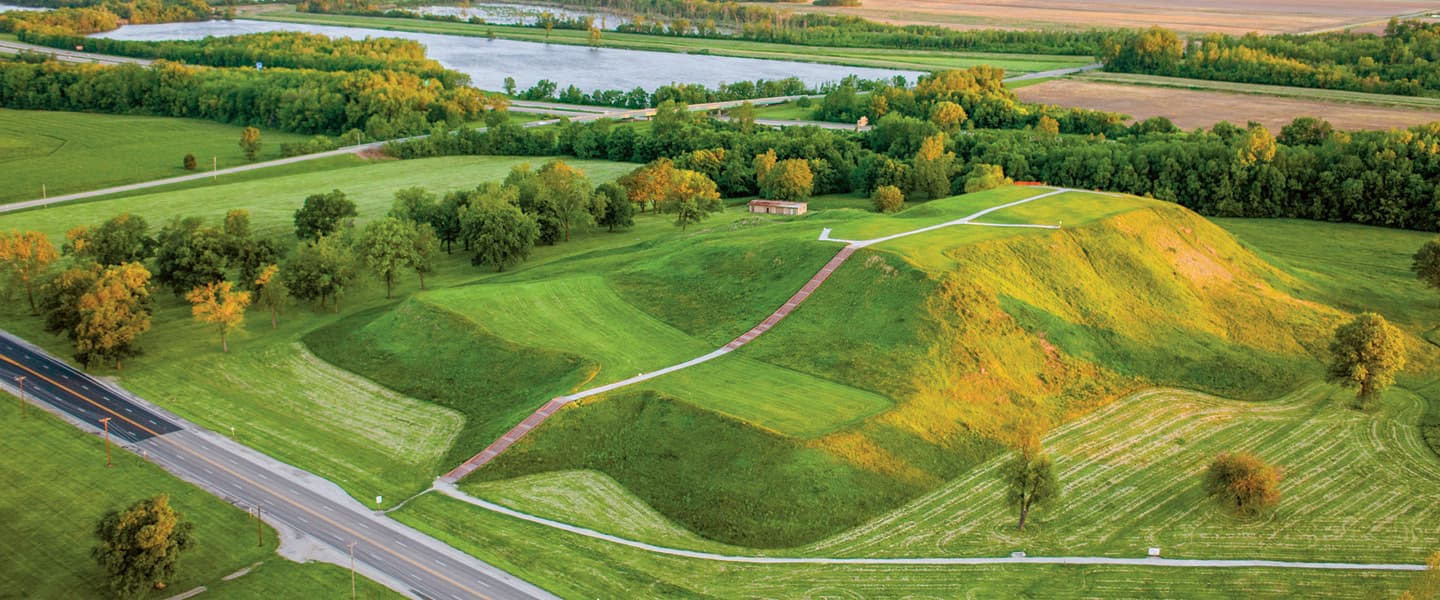Imagine, in a time long before anyone could have written about it or photographed it, a bustling American city. Voices of different languages barter for well-crafted stone tools, clay pipes, and hundreds of other items in a crowded marketplace. Close by, some 1,000 spectators jam into the Grand Plaza—like a modern sports arena—to watch athletes compete.
And at the center of it all, on a massive hill made of earth, the community’s leaders look down, overseeing their people.
This place, known as Cahokia, existed a thousand years ago, in what is now Illinois. At its height, in about 1200 A.D., more than 20,000 people lived, worked, and played here along the banks of the Mississippi River.
But a little more than a century later, most of those people were gone. All that remains today is a mysterious grouping of grass-covered mounds rising above the plain.
Now archaeologists and historians are trying to solve the mystery of America’s very first city. Many questions remain: Who founded Cahokia? Why did they choose this spot for it? And perhaps most mysterious, why did they all suddenly leave?
Imagine long ago, a bustling American city. It is before anyone could have written about it or photographed it. People who spoke different languages could trade for well-crafted stone tools, clay pipes, and hundreds of other items in a crowded marketplace. Close by, 1,000 people crowded into the Grand Plaza—like a modern sports arena—to watch athletes compete.
A massive hill made of earth was in the center of it all. There the community’s leaders looked down, overseeing their people.
This place was known as Cahokia. It existed a thousand years ago, in what is now Illinois. In about 1200 A.D., more than 20,000 people lived, worked, and played here along the banks of the Mississippi River.
But a little more than a hundred years later, most of those people were gone. All that remains today is a mysterious grouping of grass-covered mounds rising above the plain.
Now archaeologists and historians are trying to solve the mystery of America’s very first city. Many questions remain. Who founded Cahokia? Why did they choose this spot for it? And perhaps most mysterious, why did they all suddenly leave?

